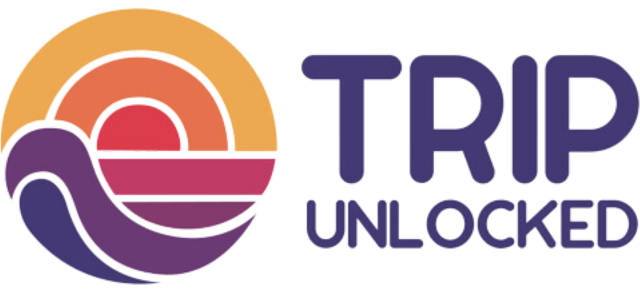This post is also available in:
![]()
Latest update: 17 March 2024
Those who love puns and camels are in the right place at Kamelenmelkerij Smits. Cheerful camel farmer Frank takes us on a camel safari for more than two hours on the camel dairy farm (kamelenmelkerij in Dutch) in Berlicum.
Admiring camels in the Netherlands
I visit the camel dairy near Den Bosch with three friends. It’s a birthday present; we like not to give each other standard gifts. After walking with alpacas, it is the camels’ turn. There are regular Sunday safaris at Camel Dairy Smits, where you can join for an explanation about camels and the dairy and, of course, admire the camels. We have not even been on the site for two minutes, and things already go wrong: we have forgotten the entrance tickets. Frank himself sits behind the reception desk and immediately agrees that this is very stupid, but luckily for us, it is not a problem.
Uhhh… that’s not a camel!
We wait at the meadow until the tour starts, and there comes the next surprise: there is no camel in sight. It is full of dromedaries here. Uhm, what exactly do they not understand at this camel dairy farm? Your camels are missing a hump!

Camel safari full of camel facts
During the presentation, it quickly becomes clear that they ARE camels after all. We call them dromedaries in the Netherlands, but the rest of the world simply distinguishes between one-humped and two-humped camels. We find this news a bit difficult to swallow, and a cautious finger is raised when the camel farmer asks if anyone has problems with the dromedaries that are camels. This is, of course, asking for trouble, but it makes the visit even more fun.
Frank is a joker anyway: camels can withstand cold and heat well thanks to, among other things, the fat in the hump, so camels are a ‘fat lot of good’. While he explains what camels eat, in addition to cacti and grass, he casually mentions that they also like small children. He probably makes these jokes at every presentation but still delivers them with credibility and conviction.
This is how you start a camel dairy farm
The founding of the camel dairy is a bizarre story. Frank bought three camels as a joke during his student days and placed them in a meadow near his student flat. He had read studies about how healthy camel milk was, which appealed to him. He started milking, and it worked so well that he has over a hundred camels eleven years later.
Frank now milks camels in a former cowshed. He does this with a modified cow milking machine. A camel produces about 6 liters of milk per day. Camel milk is sold as milk but is also used in soap, camel milk liqueur, and chocolate.

Watching camels and taking selfies
After the explanation, we have a look in the stable. The camels come out of the pasture and are herded into the stable. From then on it is time to take photos. Children and adults are allowed to sit on a camel. I wonder whether that is a good idea in terms of animal friendliness. I recommend that adults stick to a selfie and not sit on the camel. And taking selfies is not that easy. Many photos later, this is my best result.


Once the photos have been taken, everyone in the restaurant can taste camel milk and bake their own pancake from camel milk. It doesn’t have a significantly different taste than cow’s milk actually. Take goat’s milk, for example; it has a strong odor. But that is not the case here. You can easily replace cow’s milk with camel milk. It is just a bit more expensive: 8 euros per liter.

The only camel dairy farm in Europe
Camel Dairy Smits (kamelenmelkerij) is the only camel dairy in Europe and the only one legally allowed to sell camel milk. How unique is that?! This is also a fun day out with small children. Or actually, especially with small children, but we big kids enjoy a camel safari just as much.
Visit the website to book your camel safari.



More travel inspiration for the Netherlands

Useful links for travel in the Netherlands
- Accommodation. Forever favorites: Booking.com and Campspace. Or try a holiday resort via Roompot. Rather stay in a hostel? Try HostelWorld.
- Activities. You book the best tours and activities with GetYourGuide and Viator. Another good option is WithLocals. Try a ‘free’ walking tour with Freetour or GuruWalk, and for bike tours, try Baja Bikes.
- Attractions and museums. Get a 5% discount on museums and attractions via Tiqets with the coupon code KIMOPREIS22.
- Car rental. Compare more prices at Discover Cars and Rental Cars.
- Package deals. Rather go on a catered trip? Try CheapOair or Expedia.
- Public transport. Use the regular public transport options, or find a bus, train, or other mode of transportation on Busbud or Omio.
- SIM card. Beware of unexpectedly high calling and internet costs. Buy a local SIM card when you arrive, or arrange one online via Airalo.
- Travel guides. I love the practical travel guides from Lonely Planet, buy them Amazon. I always enjoy seeing my own country through the eyes of foreign visitors.
- Yoga retreat. Or try a yoga retreat in the Netherlands.
Some of the links on this site are affiliate links. If you buy something through these links, I might receive a small commission.
First published: February 2017. Updated since.

